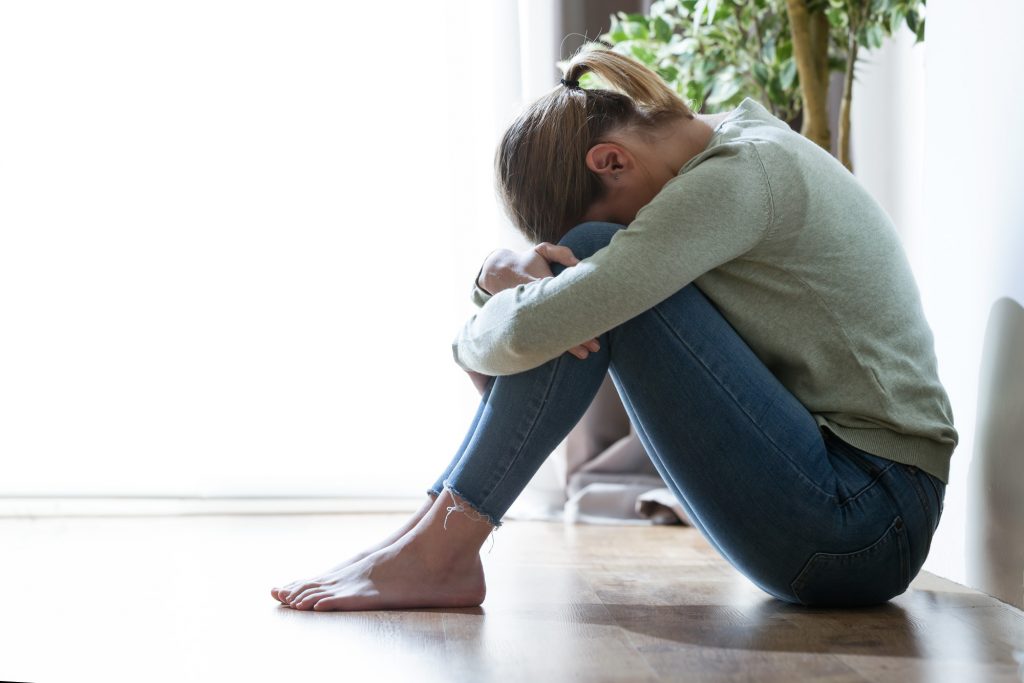They used to call it the winter blues. Up to 1984, no mental health professional knew what to call the unique, seasonal depression they saw in their patients every year. SAD (Seasonal Affective Disorder) wasn’t formally named until 1984 by Norman E. Rosenthal and his peers at the National Institute of Health (NIH).
For the first time, depression and SAD were separated. In 2018, SAD statistics seemed to follow where the sun shines the most to the least amount of time during the colder months. 1.4% of people in Florida were diagnosed with SAD.
9.9% of the people in Alaska were diagnosed with SAD. Depression and SAD have some mental health disorder similarities, but they are different disorders. What is unique about SAD is it is a major depressive disorder that reoccurs every year during the same season.
Most of the time, SAD goes away in the next season. But depression can last for an indeterminate amount of time. Read on to learn more.
Depression Seasonal
One of the ways depression is diagnosed is through the person’s feelings or activity level. A person will start feeling sad or lose interest in activities they once enjoyed. Depression can often lead to other emotional and physical problems.
Overall, depression affects a person’s ability to function at home or professionally. SAD has some of the same symptoms of depression, but there are a couple of key differences.
SAD affects about 10 million Americans every year. It is thought there is another 10-20 percent of all adults who suffer from SAD but never report it. Women suffer from SAD four times as much as men.
The good news is, there are ways you can tell the difference between depression and SAD. Clinical psychologists have come up with some signs that will help guide you on what you may be experiencing and what you need to do next.
SAD Symptoms
SAD symptoms differ depending on if they occur during the winter or the summer months. But the DSM-5 lists the common symptoms for winter SAD as:
- Thoughts of suicide
- Weight gain
- Insomnia or too much sleep
- Low energy levels
- Anxiety or irritability
- Avoidance tendencies
- Lack of concentrate
- Feelings of social rejection
The DSM-5 lists the common symptoms for summer SAD as:
- Weight loss
- No appetite
- Anxiety
- Agitation
- Inability to sleep
SAD can start at any point during your life. Clinical psychologists report SAD tends to occur when someone is between 18 and 30 years old.
Depression Symptoms
Depression disorder symptoms are varied and sometimes different person-to-person. Depression disorder symptoms do have some common signs:
- No interest in your hobbies or activities
- Slow-moving walk
- Slow-moving speech that is not typical for you
- Weight gain or loss
- Thinking about death or suicide
- Constant headaches or pains
- Lack of concentration
- Lack of sleep or too much sleep
- Feelings of worthless and emptiness
One in six people will experience depression in their lifetime. One in 15 adults will experience depression during any given year.
Seasonal Affective Disorder vs. Depression
The most important aspect when comparing seasonal affective disorder with depression is to be aware that SAD is a form of depression. It can even be major depression, as many medical studies have shown.
There is one major difference between SAD and depression. SAD is seasonal, and depression has no fixed end date. It is because SAD is seasonal that some of the treatments for SAD have unique features. SAD treatment includes the usual counseling and sometimes anti-depressant medication.
SAD treatment may also include some unique features like vitamin D and light treatment. Light treatment is one of the first treatment methods used for SAD.
Light Treatment
Light treatment is provided by a light treatment box that gives a very bright light. There are no ultraviolet rays (UV) emitted at all. The light treatment is given to the SAD patient for about 20 minutes a day in the morning.
It is not uncommon for patients to start having positive mental health results from light treatment in about two weeks. Light treatment is given to the SAD patient throughout the winter to prevent relapses.
Cognitive Behavior Treatment
What is called talk treatment or cognitive behavior treatment (CBT) also treats SAD. CBT is sometimes combined with antidepressants. This combination approach helps treat SADS’ symptoms by lifting serotonin levels in the brain.
Dr. Blair works closely with her SAD patients by giving them long-term treatments and methods with the most positive results.
Depression
Depression has various treatment methods that the Blair Wellness Group uses. There is no one-size-fits-all for depression treatment and treatments. It is known that treatment is the best place to start.
When treatment is combined with healthy lifestyle choices and medication, depression is very treatable. Spending time with each patient to become informed as possible is one of the most effective methods determining the patient’s treatment and treatment option should be. The patient’s medical history, life events, diagnosis, and treatment are all offered through concierge care options at the Blair Wellness Group.
Depression and SAD
Blair Wellness Group works with many different types of patients suffering from depressive disorders. Licensed Clinical Psychologist Dr. Cassidy Blair, through Blair Wellness Group’s concierge care, works through six different types of treatment treatment methods:
- Cognitive Behavioral Treatment
- Crisis Intervention Treatment
- Interpersonal Treatment
- Dialectical Behavior Treatment
- Psychodynamic Treatment
- Gestalt Treatment
Some of these treatments are very effective for SAD. Blair Wellness Group offers customized treatments and treatments. These exclusive treatments allow patients to receive the most effective and applicable treatment for their needs.
These customized and personal treatment methods give Dr. Blair measurable and positive results for her patients.
Depression or SAD
Now you know why depression and SAD are under the same umbrella but very different in causes and treatment. It’s always important to find out if you are suffering from depression or SAD. If you are experiencing any of the symptoms presented, seek mental health help immediately.
There is no right or wrong clinical treatment for depression or SAD. It always depends on what works best for you. It’s always important to remember you are not alone, and your depression is not forever.
Dr. Cassidy Blair can help you, but you must take the first step by yourself. If you want to explore any of the above treatment options for your depression, reach out to us today. You don’t have to suffer in silence when we offer the treatments, solutions, and the private care you need.














